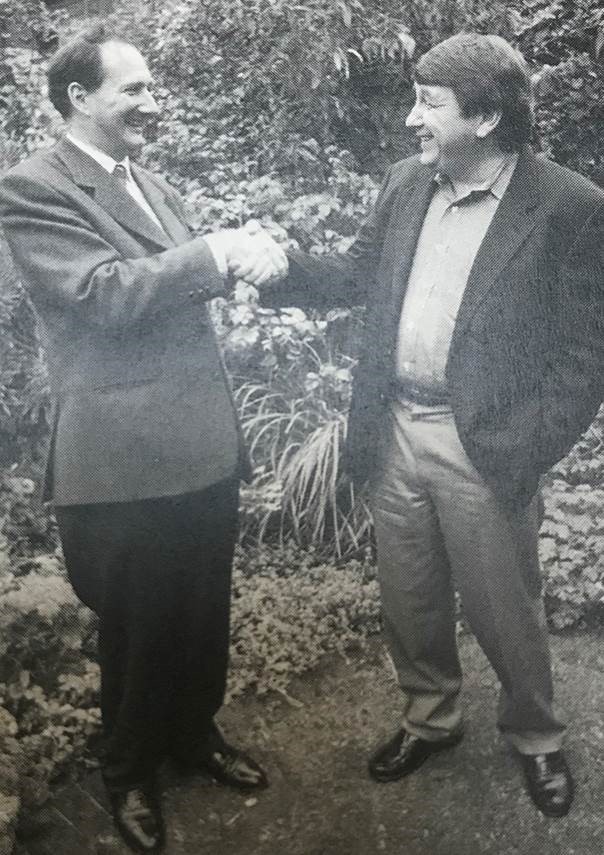Hugh Synge
IUCN mourns the loss of Hugh Synge, who passed away on 4 August after a brief but fierce battle with cancer.

Photo: Dan Ryan - Plant Life
In his lifetime, Hugh (left in picture above) made a huge contribution to the work of IUCN, particularly to IUCN’s Species Survival Commission (SSC) and World Commission on Protected Areas (WCPA).
One of his most important achievements was to put plant conservation on the global agenda at a time when conservation was focused on animals. Hugh inspired botanists (and taxonomists) to think beyond their immediate work to creating conservation action plans – which he urged should be implemented.
He played a significant role in the formation of the IUCN-WWF Plants Conservation Programme, and was the first chair of this programme in the 1980s. Hugh worked to raise the importance of plant conservation and drew up the plans for the Botanic Gardens Conservation International – a global network that links the world’s botanic gardens and partner organisations. He also helped create the first IUCN Plant Red Data Book in 1978.
Alongside Gen Lucas, Hugh managed IUCN's Threatened Plants Unit, which consisted of a team of up to 14 staff based at the Royal Botanic Gardens, Kew. He developed the world's first computer databased on threatened plants, which eventually recorded the distribution and conservation status of more than 30,000 species. Furthermore, Hugh played a key part in encouraging many national programmes around the world aimed at documenting and conserving threatened plants.
Hugh Synge played a major role in IUCN’s work on protected areas and World Heritage. In the 1990s, he took a leading part in preparing the European Action Plan for IUCN-WCPA: Parks for Life, which set out the policies and actions needed for an effective network of protected areas in Europe. Involving over 200 individuals and institutions, this landmark project was at the time IUCN's largest-ever exercise in regional collaboration between government agencies, NGOs and staff of protected areas, and served as a benchmark for other IUCN-WCPA regional action plans around the world.
Hugh regularly lent his considerable botanical expertise to IUCN’s World Heritage team as a valued reviewer and evaluator of botanical sites proposed for the World Heritage List.
Hugh is remembered as a brilliant if somewhat eccentric force for plant conservation. His contribution was marked not only by his deep knowledge of plants, but by an attention to detail, formidable editing skills (with an enthusiasm for the English language) and a total commitment to the wider conservation cause. The world of nature conservation owes him a great debt of gratitude.
Please see the Guardian link for full obituary of Hugh Synge.



